Siargao Island is a great destination for travelers who seek to explore nature and wildlife. This paradise island located in the Philippines is home to a diverse array of bird species that contribute to the island’s unique and vibrant ecosystem.
There are over 200 bird species on the island, including migratory birds and endemic species that can only be found in Siargao. From the colorful kingfishers to the majestic eagles, Siargao’s birdlife offers a captivating experience for bird watchers and nature enthusiasts.
This article provides an overview of the different types of birds found on Siargao Island.
1. Rufous Hornbill
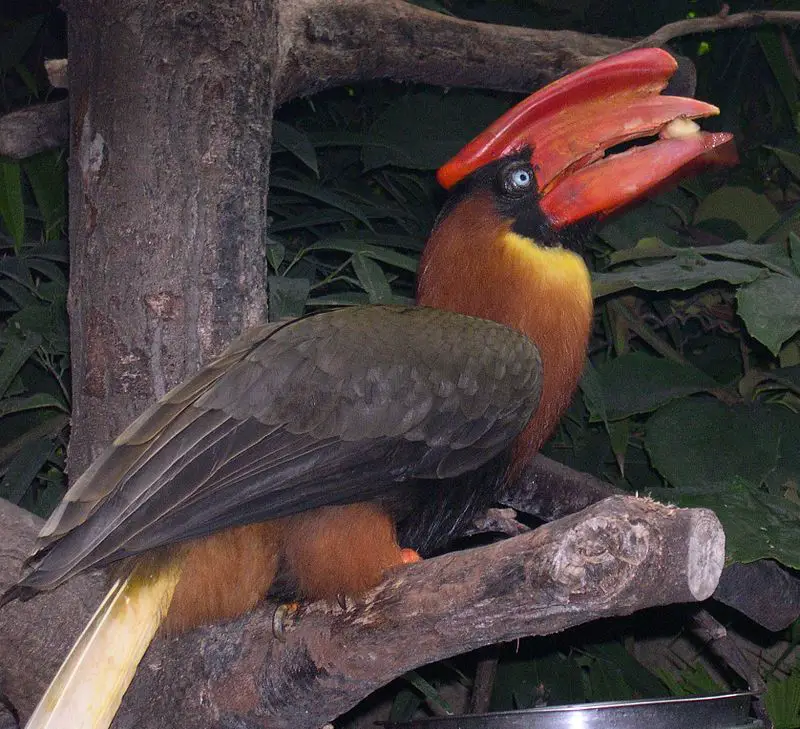
The Rufous hornbill is a large and majestic bird endemic to the Philippines. Residing in moist tropical lowland forests, locals affectionately refer to them as “the clock of the mountains” due to their booming calls that echo through canyons every hour – an unmistakable sound in these parts.
The males are adorned with a bright red bill and casque while females have entirely black bills.
These birds make for excellent companions, being highly social animals known for forming strong bonds with each other.
So why not take some time out of your day and admire this incredible species?Scientific classification:
| Kingdom | Animalia |
| Phylum | Chordata |
| Class | Aves |
| Order | Bucerotiformes |
| Family | Bucerotidae |
| Genus | Buceros |
| Species | B. hydrocorax |
Also Featured In: Birds of the Philippines, Common Philippines Birds
2. Brown Booby
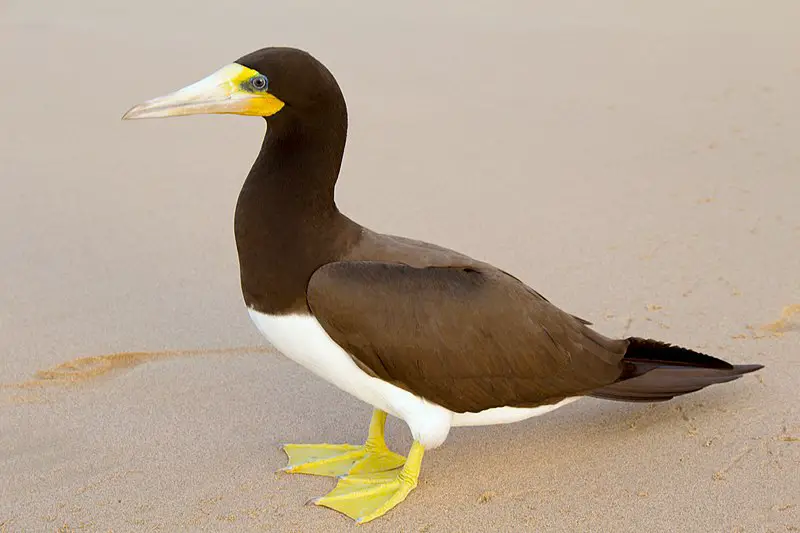
The Brown Booby is a large, seabird from the booby family Sulidae. It has a pantropical range and can be found in many areas of the world.
This bird lives in flocks and forages by plunging into shallow waters to catch small fish that are driven near the surface by predators or storms.
The brown booby is known for its short wings which make it highly maneuverable when hunting; this allows it to pursue prey quickly with sudden turns and dives.
Its diet also includes squid, crustaceans, eggs of other birds, as well as scraps from boats or ships they may come across while flying around coastlines.
They sometimes rest on floating objects during their long flights over open water between islands or continents.Scientific classification:
| Kingdom | Animalia |
| Phylum | Chordata |
| Class | Aves |
| Order | Suliformes |
| Family | Sulidae |
| Genus | Sula |
| Species | S. leucogaster |
Also Featured In: Egyptian Birds, Birds You’ll Find in the Sea
3. Bridled Tern
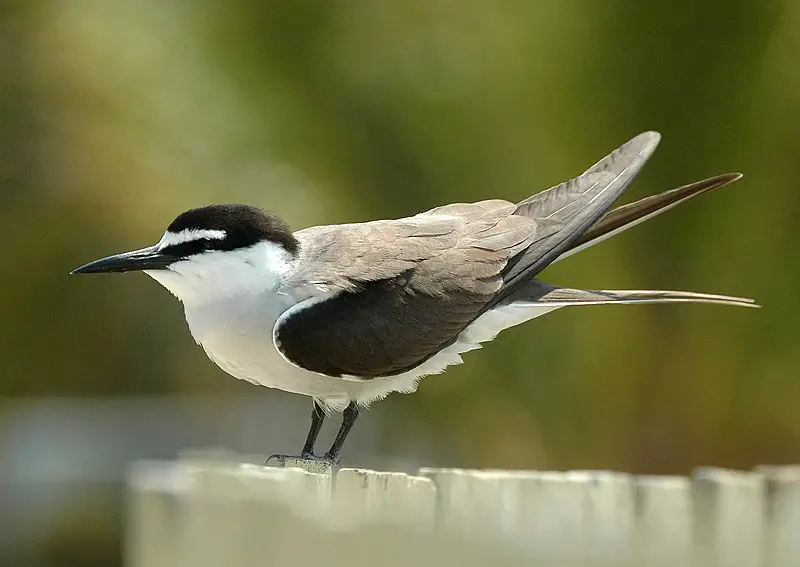
The Bridled Tern is a medium-sized seabird of the family Laridae, found in tropical oceans. It has an impressive wingspan of 77–81 cm and measures 30–32 cm in length – similar to that of the Common Tern.
Its scientific name originates from Ancient Greek; Onux meaning “claw” or “nail”, and Prion, which translates as “saw”. The specific anaethetus means ‘senseless’ or ‘stupid’.
These birds are elegant flyers with greyish brown upperparts and white underparts when they take off into flight, while their head appears black on top but turns to white below the eyes with a thin line between them.Scientific classification:
| Kingdom | Animalia |
| Phylum | Chordata |
| Class | Aves |
| Order | Charadriiformes |
| Family | Laridae |
| Genus | Onychoprion |
| Species | O. anaethetus |
Also Featured In: Oman Birds, British Virgin Islands Birds You Need to See
4. Roseate Tern
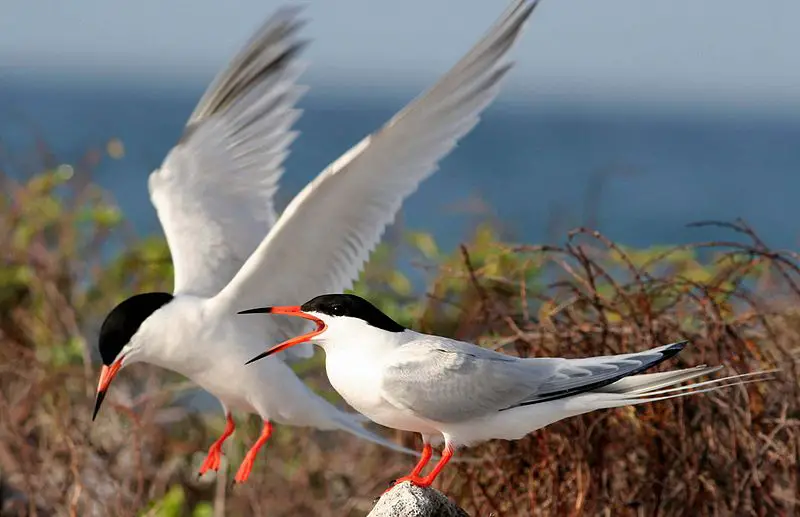
The Roseate Tern (Sterna dougallii) is a species of bird that belongs to the family Laridae. It gets its name from its pink breast in breeding plumage, which gives it a “roseate” appearance.
The genus Sterna comes from Old English and means “tern” while the specific dougallii refers to Scottish physician and collector Dr Peter McDougall (1777–1814).
This species was first described by George Montagu in 1813.
They are most common near coasts but can be found further inland occasionally too. These birds mainly feed on small fish like sardines, anchovies or herring as well as crustaceans when available.
They typically lay two eggs each year during their breeding season between May-September before migrating south for winter months.Scientific classification:
| Kingdom | Animalia |
| Phylum | Chordata |
| Class | Aves |
| Order | Charadriiformes |
| Family | Laridae |
| Genus | Sterna |
| Species | S. dougallii |
Also Featured In: Ireland Birds, Birds that Live in the Ocean
5. Lesser Frigatebird
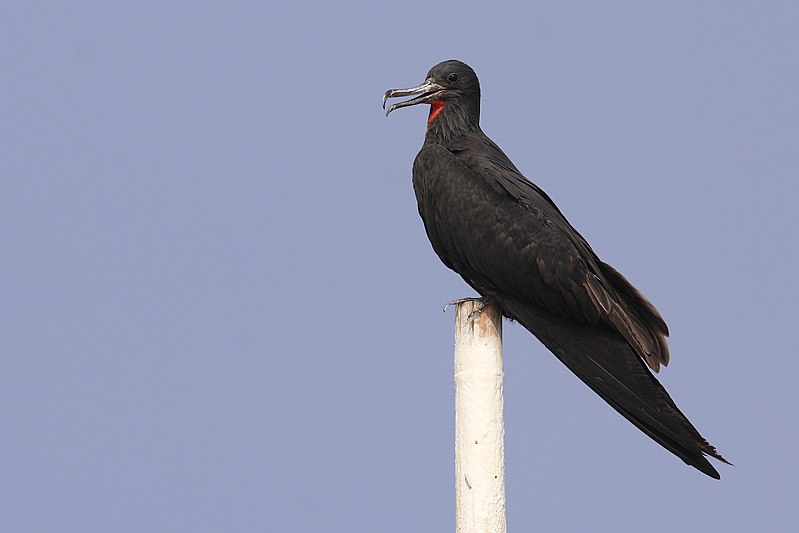
The Lesser Frigatebird is a seabird of the Fregatidae family and is known to be the smallest species in this group. It has brownish-black plumage, long narrow wings, and a forked tail.
This bird inhabits tropical and subtropical regions across the Indian Ocean, Pacific Ocean as well as off Brazil’s Atlantic Coast.
It feeds on fish taken from surface water or by plunge diving while flying low over shallow waters.
Its primary breeding grounds are located around islands with steep cliffs where it builds its nests out of twigs and grasses high up near ledges or crevices.
The lesser frigatebird can live for about 25 years due to their strong aerodynamic abilities which allow them to glide through air currents effortlessly thus conserving energy during flights that last days at a time.Scientific classification:
| Kingdom | Animalia |
| Phylum | Chordata |
| Class | Aves |
| Order | Suliformes |
| Family | Fregatidae |
| Genus | Fregata |
| Species | F. ariel |
Also Featured In: Mauritius birds, Birds that Live in Tahiti Island
6. Bulwer’s Petrel
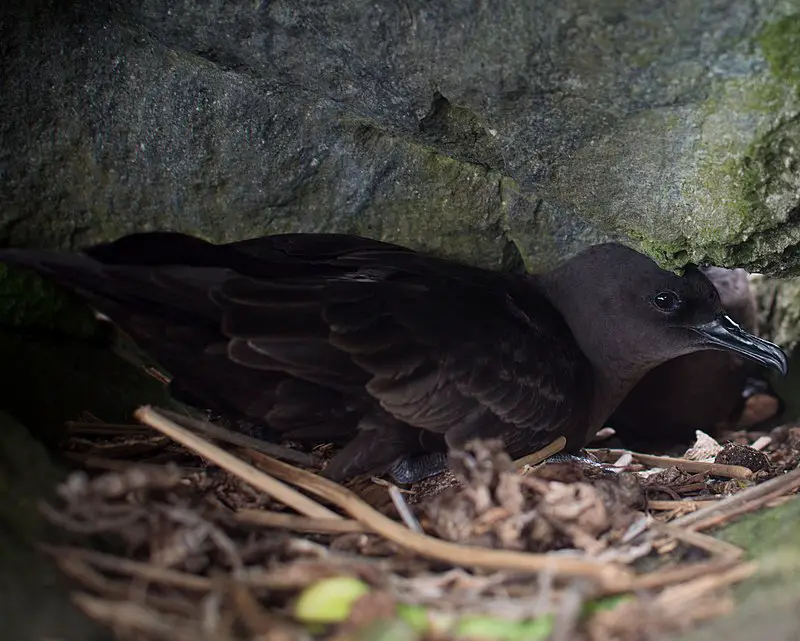
Bulwer’s petrel is a small seabird in the Procellariidae family which can be found across tropical and subtropical regions of the Atlantic, Indian and Pacific Oceans.
It was named after English naturalist James Bulwer who first described it in 1828 along with Jardine and Selby.
The bird has dark greyish plumage on its back while the underside is typically white or pale grey.
Its wings are short but broad making them ideal for soaring high above large bodies of water looking for food such as squid, fish, crustaceans and insects.
They use their long pointed bill to catch prey from both surface-skimming dives or underwater plunges up to 15 meters deep.
These birds nest burrows dug into soil cliffs where they lay just one egg each year which takes about 55 days to hatch.Scientific classification:
| Kingdom | Animalia |
| Phylum | Chordata |
| Class | Aves |
| Order | Procellariiformes |
| Family | Procellariidae |
| Genus | Bulweria |
| Species | B. bulwerii |
Also Featured In: Cabo Verde birds, Hong Kong Birds You Need to See
7. Black-Naped Tern
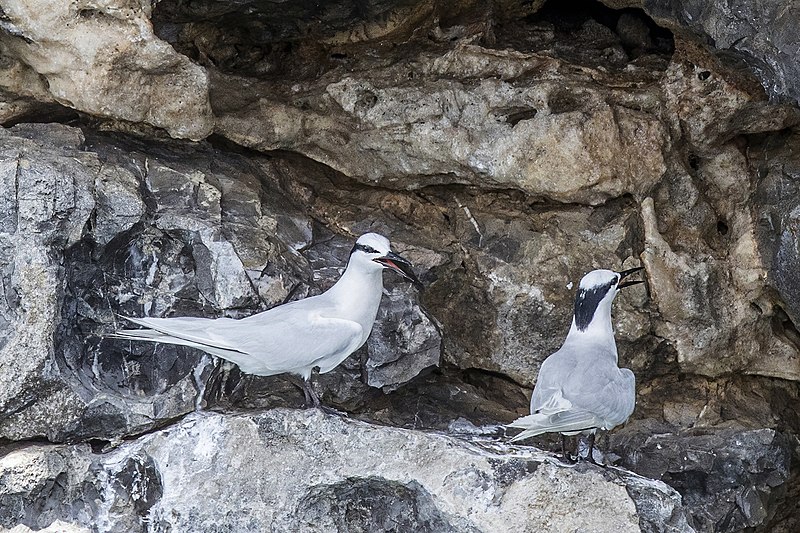
The beautiful Black-naped Tern is a seabird found in tropical and subtropical areas of the Pacific and Indian Oceans.
These terns measure around 30 cm long, with a wing span of 21 to 23 cm, black beaks and legs, yellow bill tips, long forked tails and white faces.
The breast has grayish-white feathers that extend down its back – forming an elegant nape hence their name.
They are rarely seen inland but they can stay close to coastal waters or even venture further out depending on seasonal changes.
Their diet consists mainly of fish which they hunt from above by hovering before plunging into the sea at high speed after prey. They also feed on crustaceans sometimes too.
All in all these birds have an interesting lifestyle; incredibly graceful when airborne yet ferocious hunters underwater making them quite a sight.Scientific classification:
| Kingdom | Animalia |
| Phylum | Chordata |
| Class | Aves |
| Order | Charadriiformes |
| Family | Laridae |
| Genus | Sterna |
| Species | S. sumatrana |
Also Featured In: Maldives birds, Birds You’ll Find in the Marshall Islands
8. Wedge-Tailed Shearwater
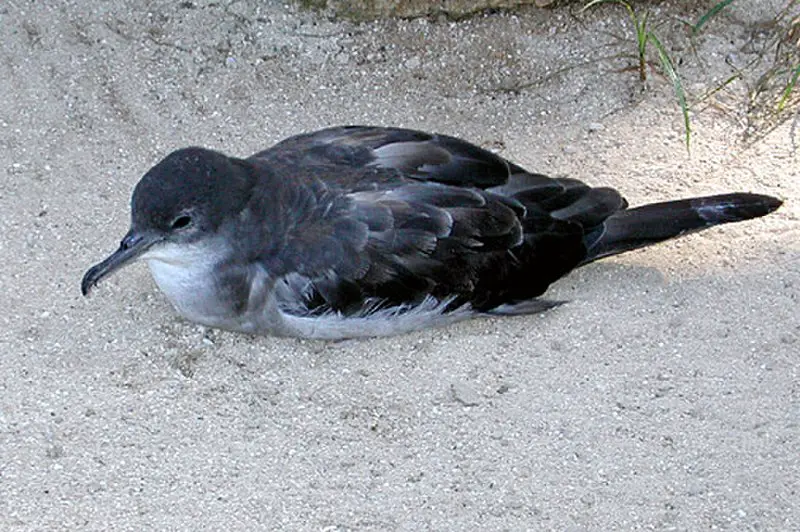
The wedge-tailed shearwater is a medium-large seabird found in the tropical Pacific and Indian Oceans. It is one of several species referred to as muttonbirds, along with the sooty and short-tailed shearwaters.
These birds have long wings that allow them to soar for extended periods over large bodies of water while searching for food such as fish, squid, crustaceans, cephalopods and other marine invertebrates.
During mating season they nest on islands or small sandy beaches where both parents take turns caring for their chicks until they fledge at around two months old.
Wedge-taileds are an important part of many island cultures who traditionally hunt these birds during certain times of year when populations peak due to migration patterns.Scientific classification:
| Kingdom | Animalia |
| Phylum | Chordata |
| Class | Aves |
| Order | Procellariiformes |
| Family | Procellariidae |
| Genus | Ardenna |
| Species | A. pacifica |
Also Featured In: Seychelles birds, Most Common Oahu Birds
9. Streaked Shearwater
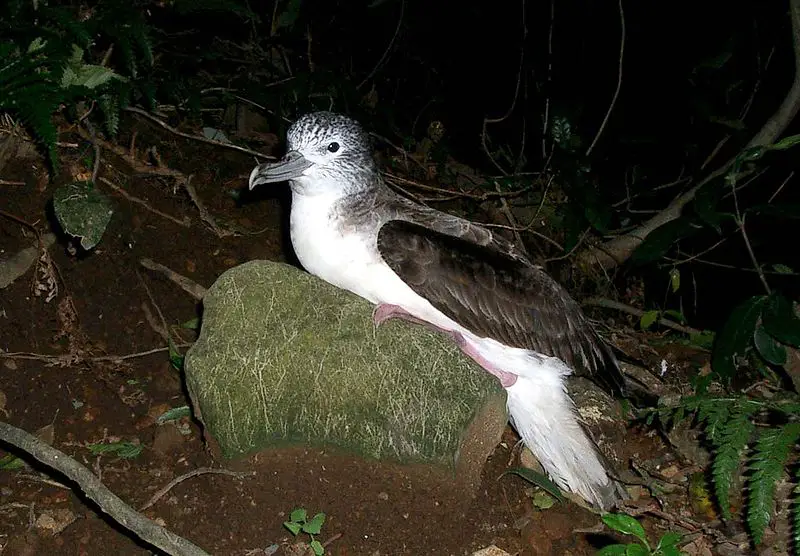
The Streaked Shearwater is a species of seabird that averages 48 cm in length and has a wingspan of 122 cm. It primarily feeds on fish, squid, and anchovy crawls off Japan.
Sadly it can often be taken as by-catch in nets or die from ingesting bait from longline fishing lines. This bird may also follow fishing boats to scavenge for food scraps thrown overboard.
Despite its vulnerability to human activity, the Streaked Shearwater’s population numbers have remained stable due to its wide range across many oceanic regions such as the North Pacific Ocean and South China Sea.Scientific classification:
| Kingdom | Animalia |
| Phylum | Chordata |
| Class | Aves |
| Order | Procellariiformes |
| Family | Procellariidae |
| Genus | Calonectris |
| Species | C. leucomelas |
Also Featured In: Palau birds, Birds that Can Survive in the Storm
10. Yellowish Bulbul
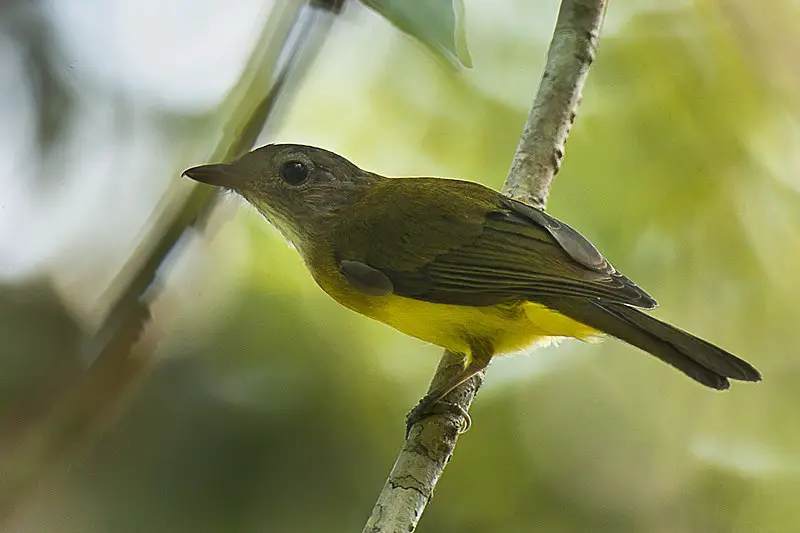
The Yellowish bulbul is a bird belonging to the bulbul family, Pycnonotidae. It was originally classified as Criniger, then Ixos and later re-classified as Hypsipetes in 2010.
Also known as Everett’s bulbul, plain-throated bulbul, and yellow-washed bulbul, this species has a yellowish coloration and is known for its melodious song. The bird is primarily found in Southeast Asia and is commonly found in forests and wooded areas.
The Yellowish bulbul is an active and agile bird that feeds on insects, berries and fruits. With its distinctive call and bright plumage, this bird is a popular sight among bird enthusiasts and nature lovers.Scientific classification:
| Kingdom | Animalia |
| Phylum | Chordata |
| Class | Aves |
| Order | Passeriformes |
| Family | Pycnonotidae |
| Genus | Hypsipetes |
| Species | H. everetti |
Also Featured In: Mindanao Birds You Should Know,